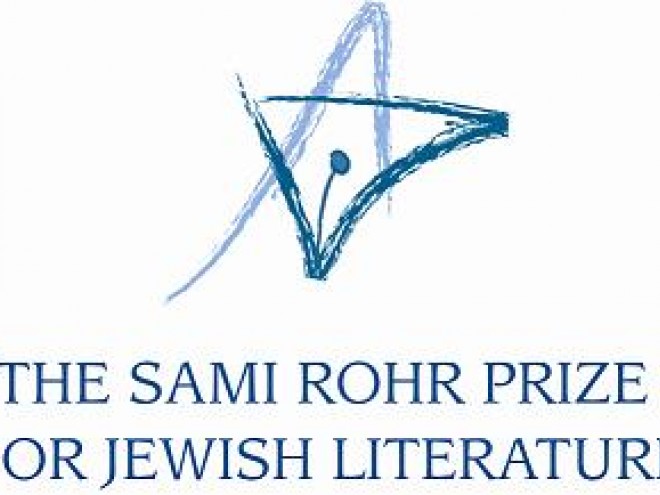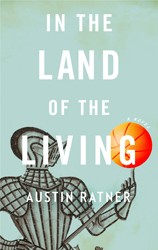A young Latvian man and his father are hiking in the Tyrolean Alps when disaster strikes. The father is murdered out of sight of the son who is accused, tried, and found guilty of patricide. That the accused was a Jew had much to do with the injustices perpetrated by both prosecutor and judge in the anti-Semitic Austrian court. Philippe Halsman was jailed despite the intervention of such Jewish notables as Albert Einstein, Sigmund Freud, and other Jewish intellectuals in this Austrian version of the Dreyfus Affair, as it came to be known.
Weak, ill, guilt-ridden in spite of his innocence, and filled with anger, Halsman is pardoned after serving part of his sentence by the more sympathetic Chancellor Johann Schober, and then is released from the wretched jail that had housed and almost destroyed him. The foregoing part of the story occupies more than half of this historical novel.
Halsman’s recovery in Italy, travels to France, love affairs, discovery of his penchant for photography, and escape to America, and then his rise to fame as a superb photographic artist, occupy the second half of this book, imparting a distracting imbalance to the treatment of Halsman’s life. Only the last few pages touch on the significance of the title, explaining how Halsman has discovered the value of obliging his subjects to jump before the taking of their portrait.
Although the novel is based on the results of Ratner’s considerable research into Halsman’s life and times, it is clearly a fictional work, as the author himself has noted. His purpose has been to explore his subject’s inner life, mirroring what Halsman has done visually in his portraits of the movie stars, politicians, and other notable performers on the world’s stage.
Excavating Moral Psychology
Walter Pater said that “all art constantly aspires towards the condition of music.” That’s true inasmuch as all art aims to represent emotion in the purest and most honest terms. But a million musical notes and paintings can never express the breadth, depth, and intricacy of vision in Hamlet. For me, literature is the supreme art — and it’s also the supremely Jewish art. John Lennon said of the groundbreaking use of feedback in “I Feel Fine,” “It is the first use of feedback. I claim it for the Beatles.” Since the Hebrew Bible and the work of Franz Kafka may be the two greatest revolutions in the history of literary art, I claim it for the Jews.
The Bible stands out as an influential moral document, of course, but it also differs from other ancient works in its psychological realism. Robert Alter has said, “[T]he Hebrew writers manifestly took delight in the artful limning of … lifelike characters and actions, and so they created an unexhausted source of delight for a hundred generations of readers.” You find jealousy, hubris, guilt, and family conflict in Greek myth (and perhaps in every story) but the Bible is more concerned with the intricacies of mental life than say, Homeric epic, or the plays of Aeschylus, where emotions occupy a central position but are seen at a longer psychic distance and are represented in more abstract ways. “The dilemma of Orestes,” A.D. Nuttall writes, “is essentially public: one god says ‘Do this,’ another god says, ‘Do that.’ There is no question of attributing hesitation or procrastination to Orestes as a feature of his character (indeed, he can hardly be said to have character).”
By contrast, when Cain and Abel bring their offerings to God, and God snubs Cain, the Bible says of Cain, “his face fell” and that God asked him, “Why is your face fallen?” The narration and the figures in the biblical stories themselves are more than in other ancient works attendant to the inner life, to discrepancies between the outward manifestations of thought and feeling and the inner facts, to discrepancies between intention and action, even between inner ideas and deeper levels of consciousness. It’s this sort of psychological humanism that reappears in the work of Boccaccio, passes through Chaucer into its apogee in the plays of Shakespeare, and resounds across the next centuries in the work of the great modernists.
In writing The Jump Artist, I wanted to join in this humanist biblical tradition in the excavation of moral psychology. My protagonist, Philippe Halsman, innocent of murder but afflicted with “survivorguilt,” is a study in depth psychology. People often ask me why Halsman rejects his girlfriend Ruth in the book without a clear justification and sometimes I answer by alluding to the Bible, where guilt compels many of the most famous characters to act in enigmatic ways. For example, Noah ostracizes his son and grandson after his own transgression (appearing drunk and naked before his sons) and Sarah banishes Hagar less because of Hagar’s actions than because of Sarah’s own pain and humiliation over her barrenness. These are entirely modern-feeling accounts of guilt and jealousy and the way the psyche tries to purge such emotions.
The historical facts of the Halsman story also cry out for biblical method because they so tightly interweave one person’s anguish with larger historical experience. Halsman’s false accusation and imprisonment were a personal ordeal and also chapters in the larger stories of fascism and anti-Semitism. I wanted to emulate the writers of the Hebrew Bible, and Tolstoy who emulated them in War and Peace; these great writers compass the innermost human thoughts adrift in the chaos and cosmic rancor of history.
Dream-life and Kafkaesque phantasm were also essential to rendering Halsman’s trauma; I see no way to explore the convolutions of the mind fully — or to account for the most irrational aspects of human history, like the Holocaust — without combining realism and expressionism. Whereas psychologically naïve forms of expressionism have been around from Homer to Hieronymus Bosch, it was the distinctly Jewish intellectual climate of early twentieth century Vienna and Prague that led to the Freudian, psychologically sophisticated expressionism of Franz Kafka.
In my new work, I continue to rely consciously on these endowments of the Jewish literary heritage. I recently finished another novel, called The Little Boys Lost after the William Blake poem, about the son of a Jewish-Polish immigrant in post-war Cleveland. When the son dies young, the narrative continues with the lives of his sons, who try to make sense of their pasts on a summer road trip in 1999. It’s another attempt to frame psychology against the backdrop of history, both personal and national. I’m also half-finished with a fantastical third novel that features a cameo by Kafka’s son. The Jews have been wordsmiths for millennia, and with the support of prizes like the Sami Rohr, they should continue to be.




